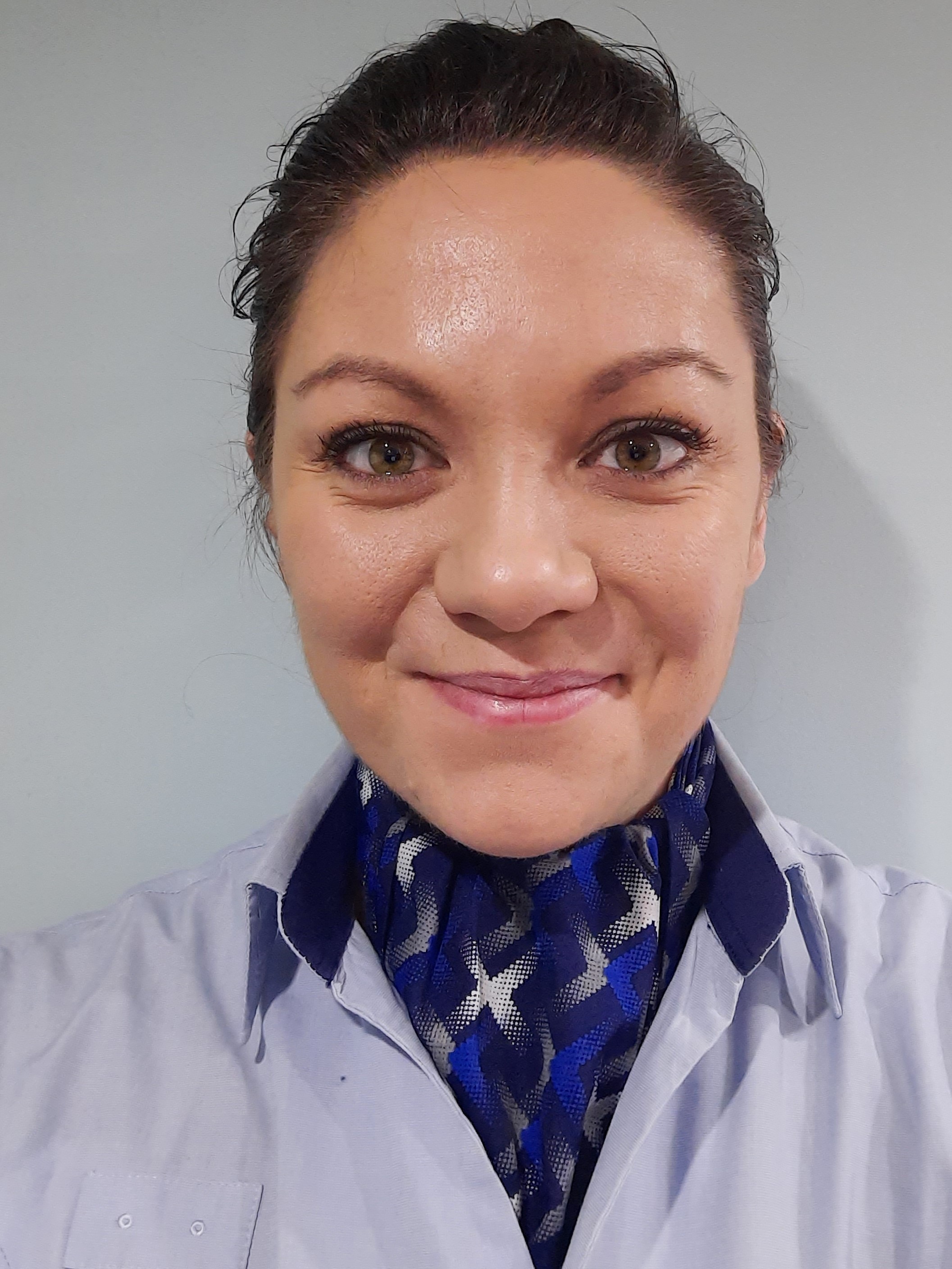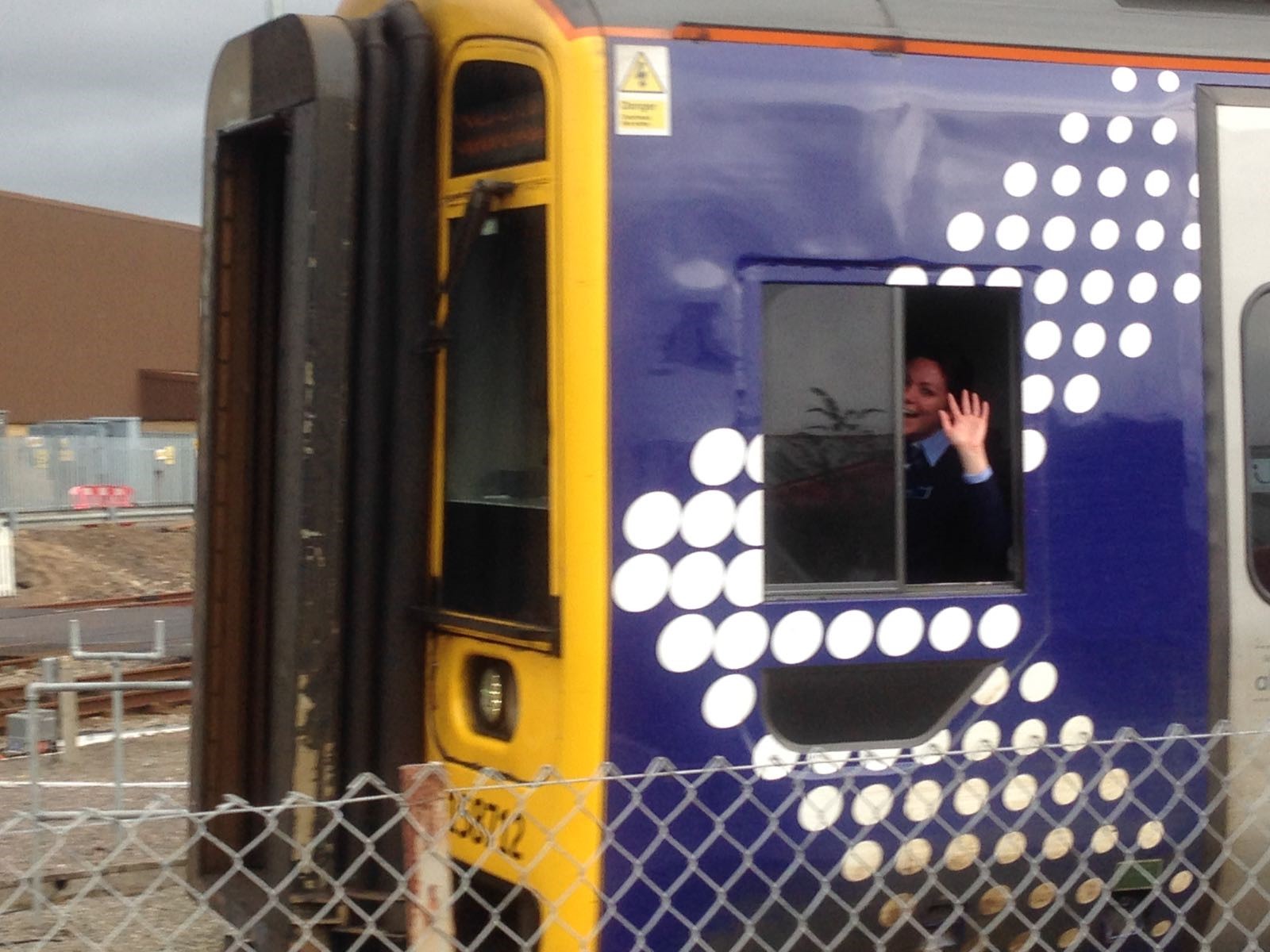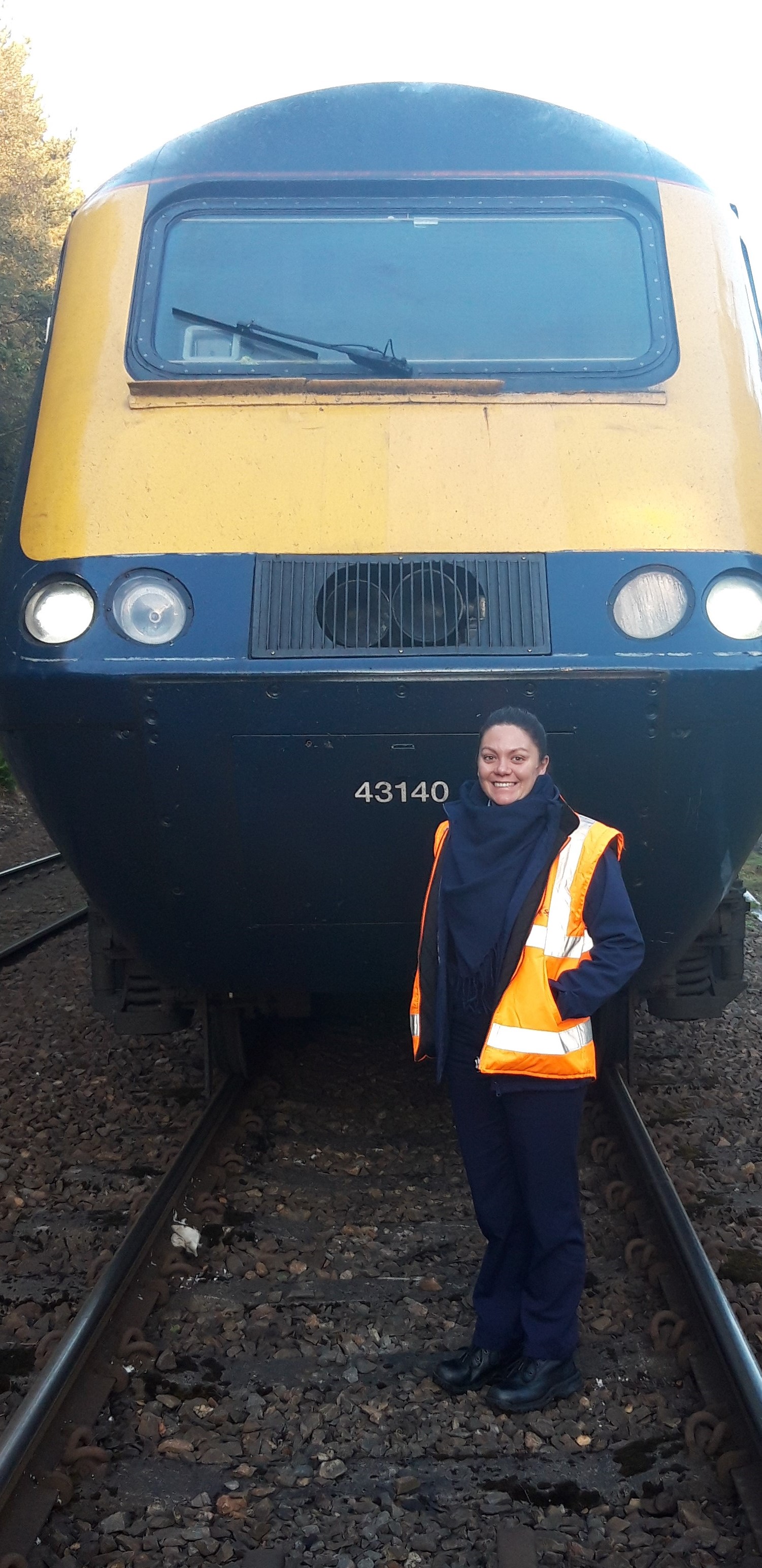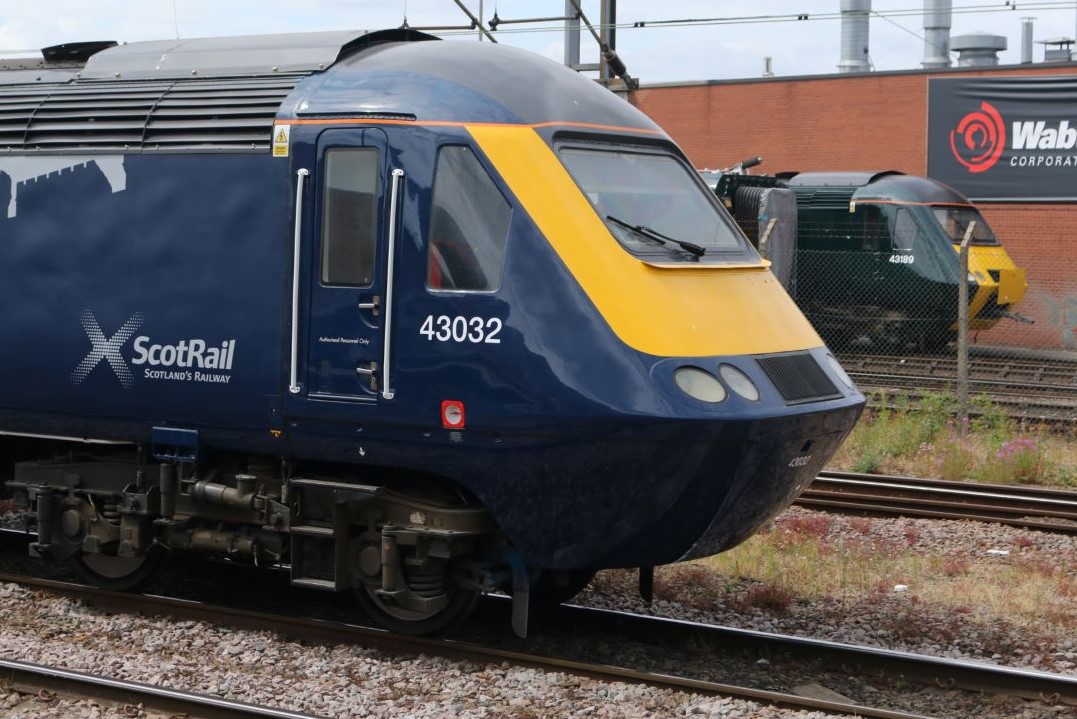Find out about The Open University's History and Social Sciences courses.
 I first joined the railway in 2013 at the age of 18. I had
successfully attained a hospitality steward job through an agency based in
Inverness. Later that year, I became a permanent Scotrail staff member and was
excited to remain part of the team I had come to value over the last few months.
I first joined the railway in 2013 at the age of 18. I had
successfully attained a hospitality steward job through an agency based in
Inverness. Later that year, I became a permanent Scotrail staff member and was
excited to remain part of the team I had come to value over the last few months.
Having moved to Inverness from South Africa in 2011 and finishing my school career here, I was comforted by the diversity within our department. Not only was I surrounded by some wonderful female colleagues, but they were also from many different corners of the world.
I learned very quickly that the railway is very different to any other workplace. My training consisted of a week in Glasgow learning the basics of the railway. We were taught the ‘common’ jargon of the industry and how to deal with emergency situations. For a customer-facing role, we were also taught how to deal with and manage customers. From requests to complaints and injuries, we were considered, along with the conductors, as part of the frontline staff. We then had a week of handling training at my home depot of Inverness, learning how best to carry out our duties with the challenges of a moving train.
I enjoyed the job and was soon promoted to a hospitality steward trainer. Working alongside the hospitality management and the new staff was a great experience, however it wasn’t to last as I developed an injury due to the physical nature of the job. Due to this injury, I was temporarily redeployed to the ticket barriers (gate line) with the intention of going back to hospitality in a few months. This was a new experience for me as I gained a new appreciation for the role of our conductors. Having worked alongside them on the train, I now realised how challenging some passengers could be where tickets and money were involved and soon discovered that in some cases, being a woman in these situations worked against me. My new-found appreciation for the conductors’ position had me keeping an eye on the job vacancy list and soon positions for conductors and drivers became available.
I had planned to only apply for the conductors’ position when this vacancy list was released, however, a driver at our depot told me in conversation ‘if you don’t apply for the job, you’ll kick yourself’. This stuck with me and so I took his advice and sent in an application for the conductors’ role and for the drivers’ role, thinking that even though I was unlikely to be successful it would be good experience for me. At this point, being a woman in the railway didn’t seem to be a problem. My age, however, was a different story.
Although I didn’t find the process to be as difficult as I was expecting it to be, it was intense, and in many cases quite stressful. I did a lot of research about the job and the company (who at the time was First Group) and I did a lot of work on my application. I was fortunate enough to be able to approach two drivers for advice and information. The first was the driver that advised I apply for the job and the second was a driver who would later become my instructor. Only a handful of close colleagues were aware that I had even applied for the drivers’ job as I was afraid of what people might think due to my age. I was aware that Inverness had a high number of female conductors with an almost even split. We did not, however, have many female drivers. At the time of my application, Inverness was a depot of roughly forty drivers of which only three were women.
I went through the application process and then, surprisingly, I was given an interview. Having been successful in my interview I was sent to our training centre in Glasgow to complete a series of psychometric tests along with the other candidates. These tests consist of a range of assessments that evaluate your cognitive and motor skills while working under a time limit. After passing the interview, psychometric tests and my medical, I was awarded a Train Drivers job at the age of 20. My training would start in September that year, by which time I would be 21 years old. It is important to note that in Scotland a person must be 21 years or older to legally be allowed to drive a train.
 Nicole in 2016 on her first solo run!The news of my appointment of the job went down with mixed
views and opinions. Some drivers and other colleagues were unimpressed for
several reasons. My age and femininity were certainly a sticking point.
Alongside this, however, was the idea that seniority was important. Seniority
being the idea that someone with longer service deserves a job or promotion
more so than someone with less service, and at this point I had only been with
the company for two years. Although seniority is still important in the
railway, it is no longer the case that someone ‘deserves’ a job or promotion
over another due to their length of service. Suitability to the role is much
more desirable. Sadly, I also received comments such as ‘well I guess if the
face fits’ and ‘you got the job because you tick a lot of boxes’ (these boxes
being age, gender and nationality), from men and woman alike. Thankfully
though, from the few who did not agree with my being there, there were many
more who were happy to have me.
Nicole in 2016 on her first solo run!The news of my appointment of the job went down with mixed
views and opinions. Some drivers and other colleagues were unimpressed for
several reasons. My age and femininity were certainly a sticking point.
Alongside this, however, was the idea that seniority was important. Seniority
being the idea that someone with longer service deserves a job or promotion
more so than someone with less service, and at this point I had only been with
the company for two years. Although seniority is still important in the
railway, it is no longer the case that someone ‘deserves’ a job or promotion
over another due to their length of service. Suitability to the role is much
more desirable. Sadly, I also received comments such as ‘well I guess if the
face fits’ and ‘you got the job because you tick a lot of boxes’ (these boxes
being age, gender and nationality), from men and woman alike. Thankfully
though, from the few who did not agree with my being there, there were many
more who were happy to have me.
I really enjoyed my driver training and was fortunate enough to be placed in a group with five other trainees, all with railway experience. I had 14 months of training which consisted of Rules, Traction (which at the time consisted of 158 and 170 deasel traction units) and signalling systems to name a few integral parts. Being the only woman on the course, with very little engineering or maintenance experience, I was never made to feel unworthy of the job or incompetent. Of course, I had to work hard to keep up due to my lack of traction knowledge, and work hard I did. I spent many evenings studying our traction manuals, sectional appendix and rule book. As I did not have the advantage of being a conductor before I became a trainee driver, I had a lot to learn. I was never left to struggle though. My trainee colleagues where a great help when I needed them and were always happy to answer any questions I might have had. My driving instructor was also a huge inspiration for my career. Being a driver of almost 40 years’ experience at the time, he had a wealth of knowledge for me to use and learn from. He taught me most of what I know. My instructor never doubted my ability as a female to do the job. Not only did he teach me about the job, he also taught me to become confident in my ability to do the job well.
Our training for this role is never truly complete though. Every day is a school day, with Network Rail updating sections of line and signalling systems and Scotrail recently adding another deasil traction to the fleet. The class 43 High Speed Trains (HSTs) now holds a place in Scotrail's fleet. Our training for these units seemed a bit of a whirlwind at first, with only one week of traction training and two weeks of train handling to master the air brake that was very new to so many of us. These trains had been built by British Rail Engineering Limited between 1975 and 1982 and were first released to the British public in 1976. These class 43 HSTs, which had been earmarked for museums, had been given a new lease of life under Scotrails’ ‘Building the best Railway Scotland’s ever had!’ campaign. This campaign is still ongoing, as Scotrail try to introduce shorter journey times and more comfortable trains for the public.
I did discover, however, that the public were not always as accepting of a young female train driver as my colleagues were. Having started the train handling section of my course with my driving instructor, our driving cab was often approached by passengers and members of the public. While most passengers were surprised and very complimentary to find me at the front of the train, there was the odd one who certainly was not as impressed. This is something that still happens to me now after almost six years in the role. I often get passengers looking through the cab to the other side and asking if I really am alone in there, to which I now just smile and ensure them that I am, in fact, alone. Having said that, while passengers may not always feel comfortable with a young, female train driver, many of my female colleagues were. Nothing puts a bigger smile on my face at work than having a steward or conductor proudly announcing to me that ‘we’ve got an all-female crew!’ and while, in some cases, it seems a little disheartening that this still excites us, I feel that it is hugely inspirational. In August of 2019 I was approached by an early learning centre or Pre-School, and asked to come in and do a small talk for the children as part of their schools ‘Careers’ week. This was a really lovely experience for me, and it went very well. The children really enjoyed the chat and had great fun with my bump cap and glasses (the safety kit issued to drivers the undertake shunting as part of their daily shifts). They were very intrigued by the trains with many questions about Thomas the Tank Engine, to which they were disappointed when they learned that I have never driven him! In their innocence, those children hardly noticed that I am a woman, and seemed overjoyed to just have a train driver in their midst. Although they are still very young, it is encouraging to know that in some small way, I have been able to show them that no matter what gender you may be, anyone can become a train driver with hard work and the right determination.
Women throughout the railway are becoming more involved in many of the different roles available. Inspiration was taken from my success in the appointment of the drivers’ role by some of our conducting and hospitality staff (male and female). It is greatly encouraging to see that since my appointment, Inverness has taken on five more female drivers, two of which decided to apply after witnessing my achievement.
 The driving role in Inverness may have a way to go to
receive more female drivers as we currently have eight females from sixty-six
drivers. Although this number is small, it is still a lot more than we had even
ten years ago. However, Inverness as a depot is incredibly inclusive. We have a
woman in every sector. From our maintenance department to our station manager,
the railway is definitely changing and evolving. Although we are still a
predominantly male industry, the inclusion of women in the railway is gradually
changing the public’s perception of who might be eligible to join.
The driving role in Inverness may have a way to go to
receive more female drivers as we currently have eight females from sixty-six
drivers. Although this number is small, it is still a lot more than we had even
ten years ago. However, Inverness as a depot is incredibly inclusive. We have a
woman in every sector. From our maintenance department to our station manager,
the railway is definitely changing and evolving. Although we are still a
predominantly male industry, the inclusion of women in the railway is gradually
changing the public’s perception of who might be eligible to join.
On a more personal note, my eight years in the railway so far have served me well. While I have certainly experienced struggles, most of them have been struggles faced by everyone in the role. I may never get used to the intense shift work, and I will likely be learning about new faults and failures for the rest of my career, but these are things we all face together. I can truly say that I love my job and my experiences have been mostly positive. The responsibilities of a train driver can be huge, but with the right mind set and determination the job can be very rewarding. We may never reach an even split of men and women in the industry and that is largely due to the outdated perception that the railway is an unsuitable environment for women. The industry can certainly improve where women are concerned, but as long as women are not interested in joining, those improvements will always be slow going. The job is most definitely what you make it and every day is certainly different. I am aware that I am in an incredibly privileged position to be working in a station that boasts a high number of female colleagues as not many of our depots have as many as Inverness does. This does make for an easier working environment as there are other women who are able to relate to my situation. I do hope that we will see more women in the driving role over the next ten years, but for now, the women I work alongside will continue to be, knowingly or not, an inspiration to the future women of our railways.




Rate and Review
Rate this article
Review this article
Log into OpenLearn to leave reviews and join in the conversation.
Article reviews